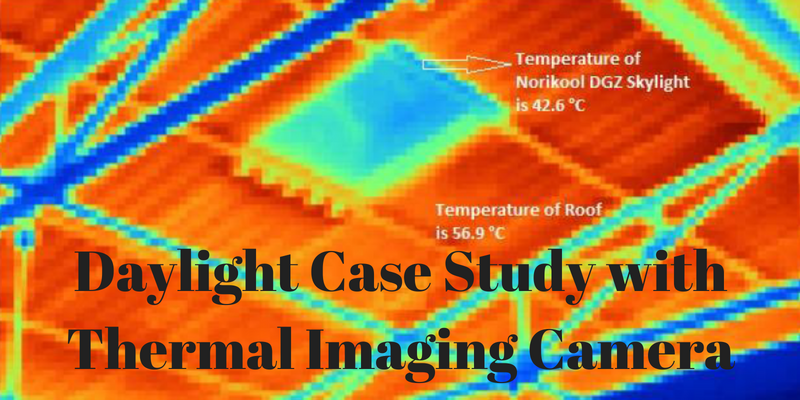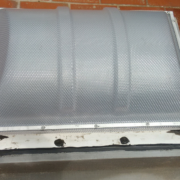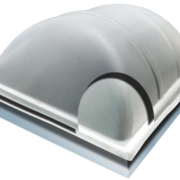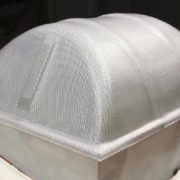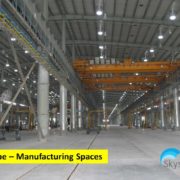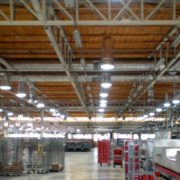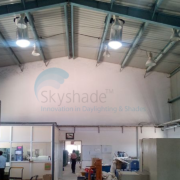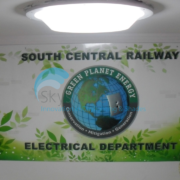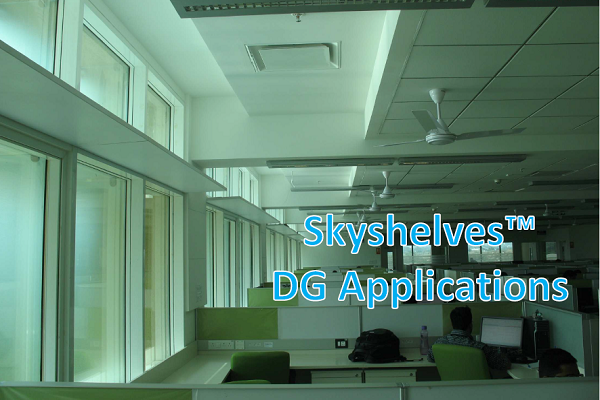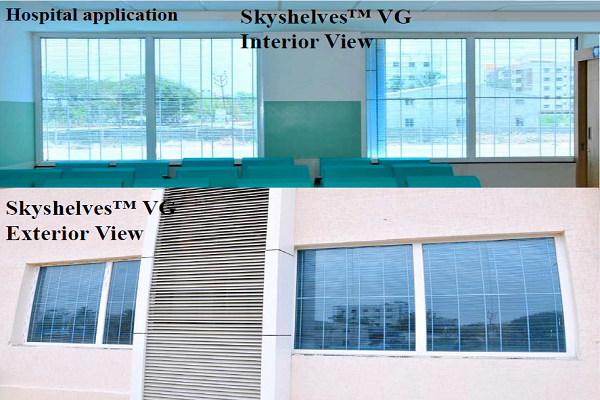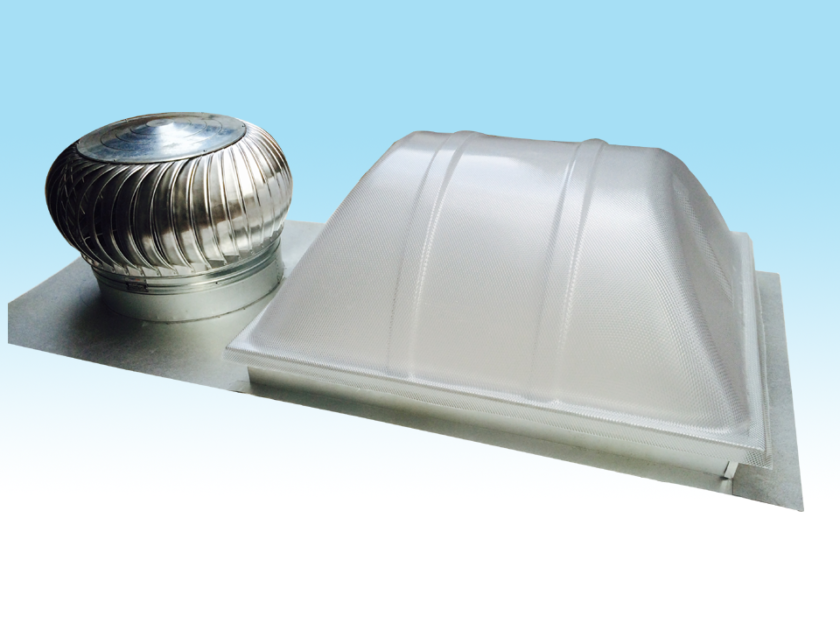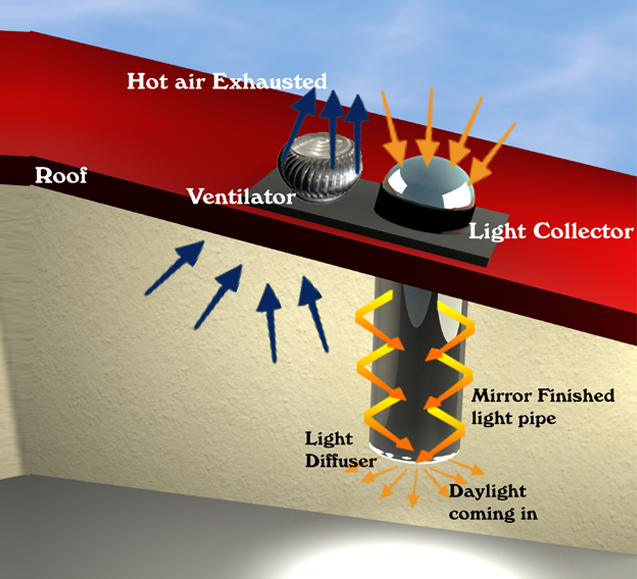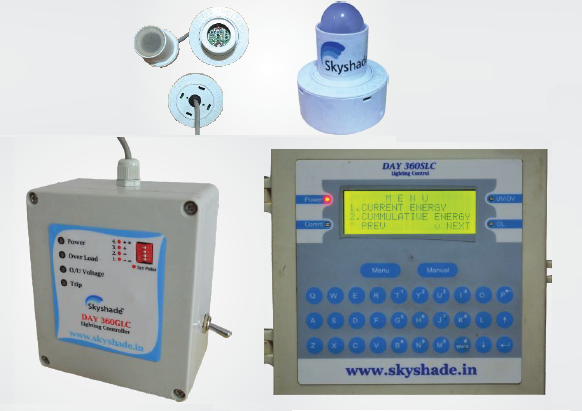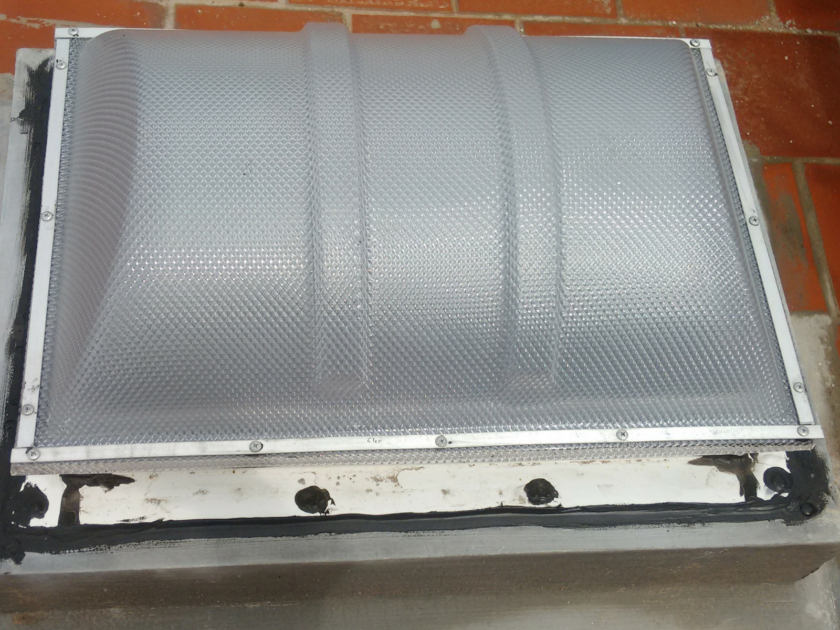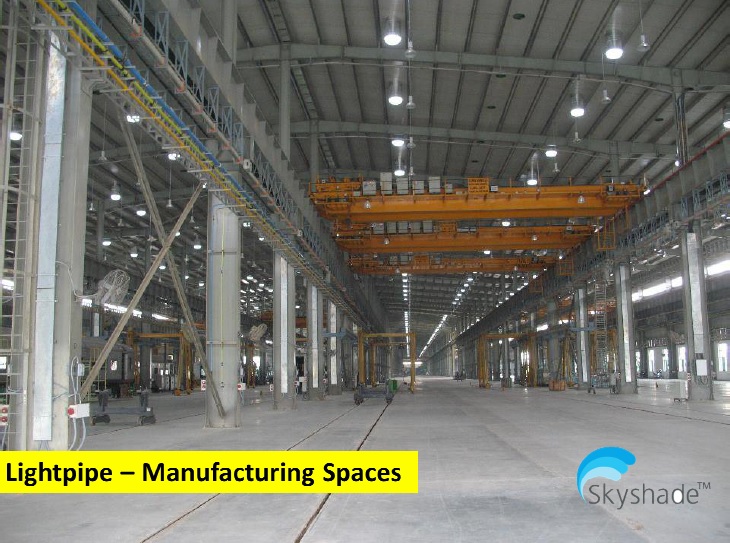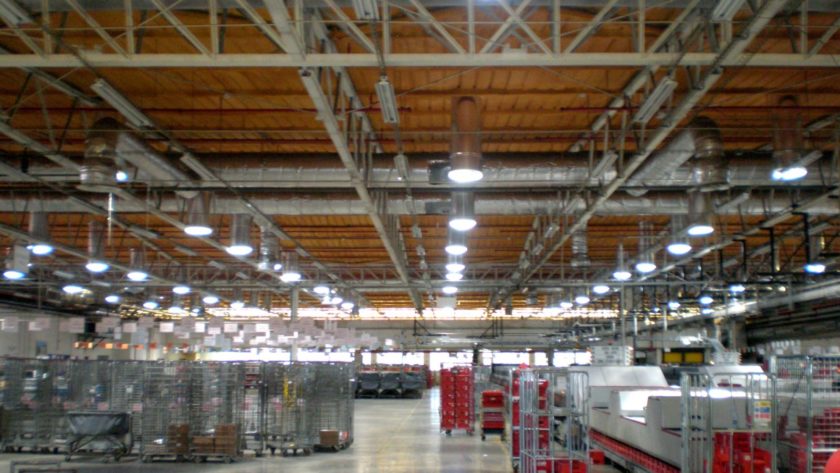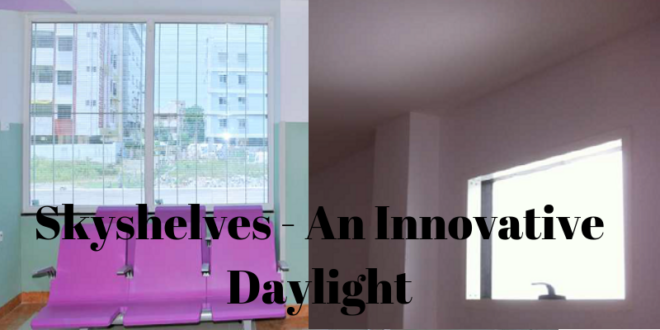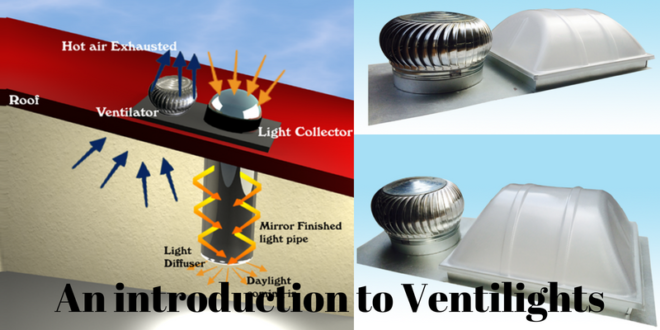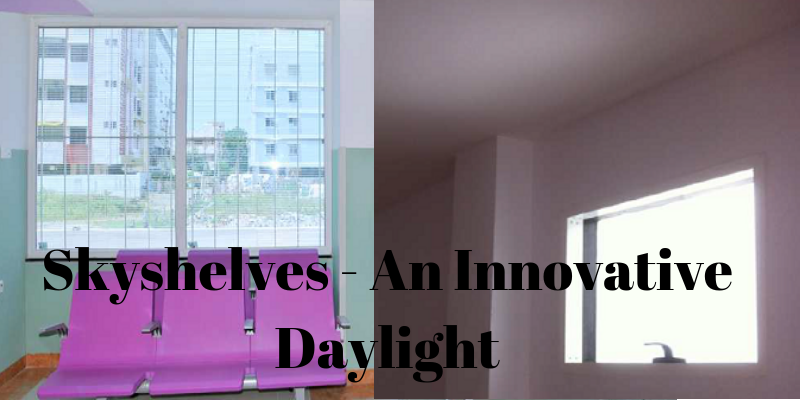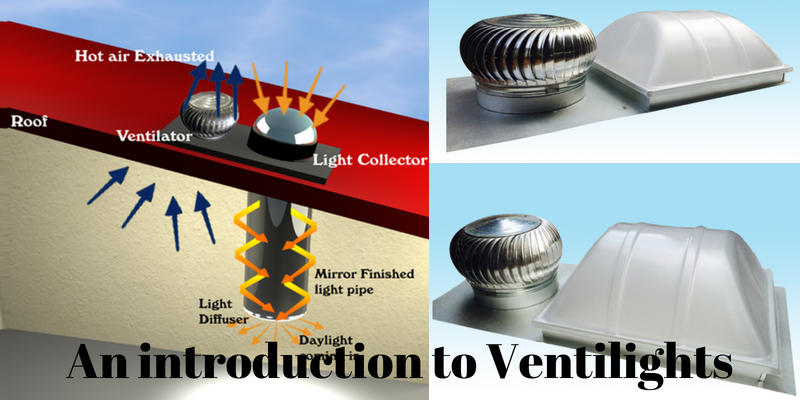Case Study on heat reduction by Skyshade Norikool daylights in factories
Skyshade Norikool Daylight eliminates the transfer of heat into the buildings in great extent. To understand the impact of Norikool in the the transfer of the heat, the following two case studies are helpful.
Methodology
The site temperature is measured using a fluke thermal imaging camera. In case study one, the difference in temperature between conventional skylight and skyshade norikool double glaze daylight is measured. In case study two, heat transmit at skyshade norikool double glaze daylights and the non insulated roof is measured and the difference in noted.
CASE STUDY 1
Location: Manufacturing Company, Coimbatore
Roof Condition: Non insulated Roof
Before installation of Norikool
Roof Area


The above is the thermal image of the poly carbonate roof sheet installed with strip lights at the factory. The strip lights are installed to allow sunlight inside. From the thermal image it can be inferred that the roof temperature is 37.1 deg. C and the temperature at the strip lights is 44.1 deg. C.
The lux level recorded is around 900 – 1500 with a variation of 66%. The level of lux level is very much higher than what is specified design code. According to the design code, a lux level of around 300 – 400 is an accepted level.
Roof Joints

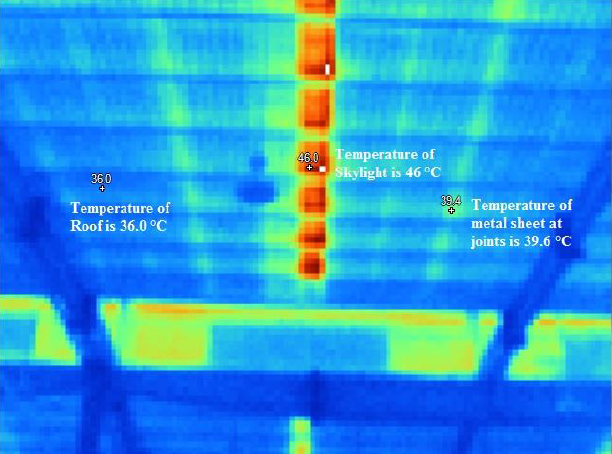
From the thermal image, it can be inferred that the temperature at the metal sheet joints is 39 deg. C. and at the roof is 36 deg. C. The temperature below the skylight is 46 deg. C. This shows that there is no uniformity in the insulation of the roof as there is a higher transfer of heat at the metal joints.
South Facing Vertical Sheet
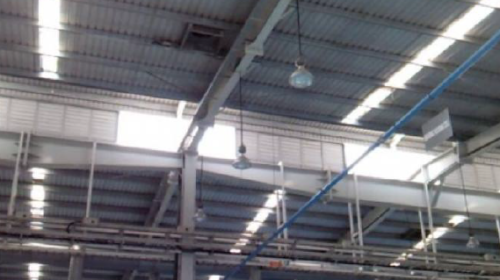
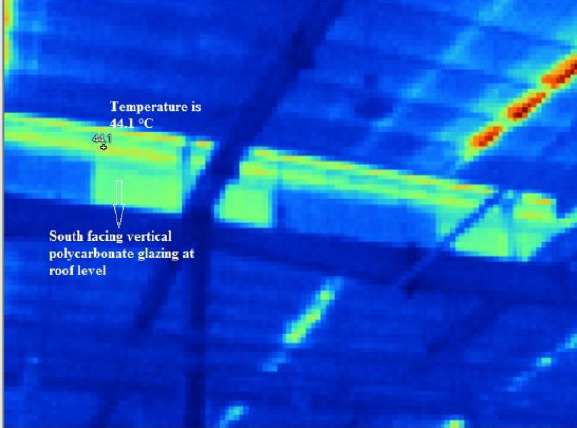
There are transparent poly carbonate sheets placed in south side to allow sunlight into the building. The temperature recorded here is 44 deg. C., adding substantial heat in the building.
Translucent side walls
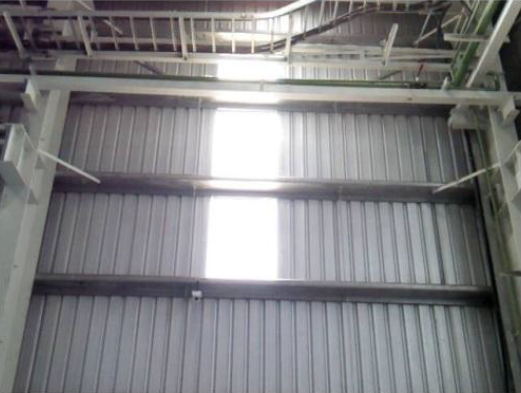
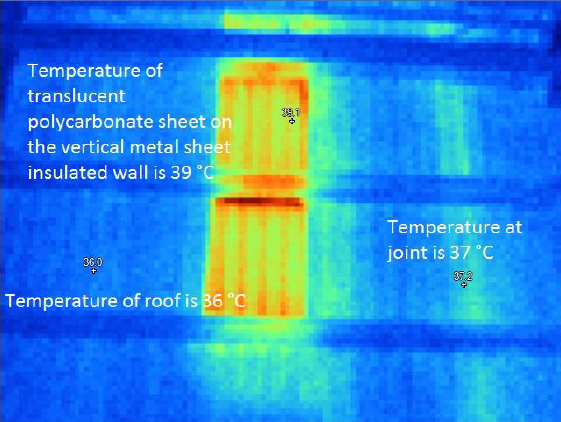
The temperature at the translucent poly carbonate sheet at the side wall is 39 deg. C. The temperature at the joint is 37 deg. C and that at the wall is 36 deg. C. This shows that there insulation is non uniform at the side wall as the joints allow more heat into the building.
Metallic Side wall
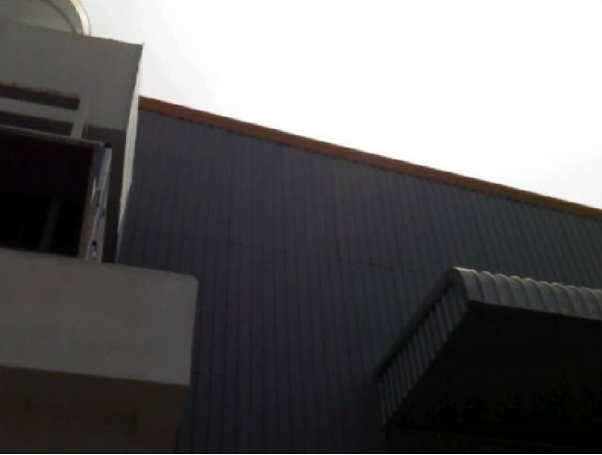
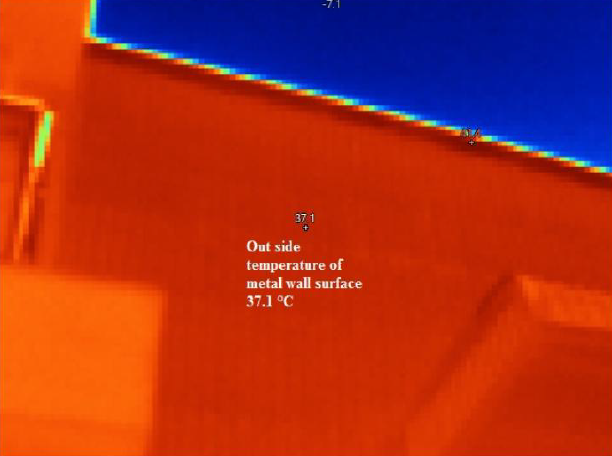
The temperature recorded at the outside wall is 37.1 deg. C.
Floor
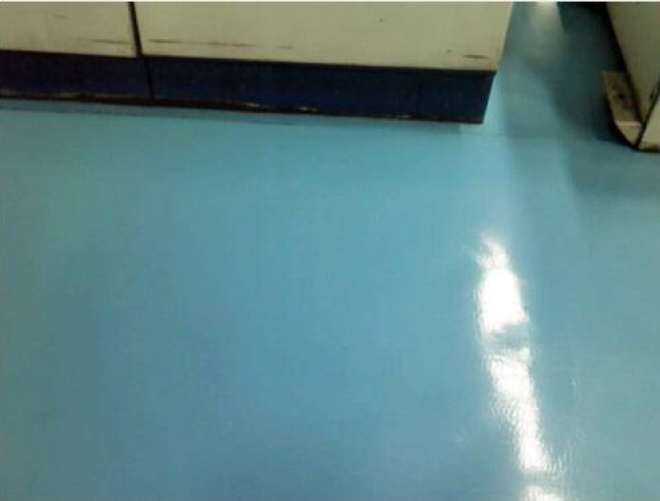
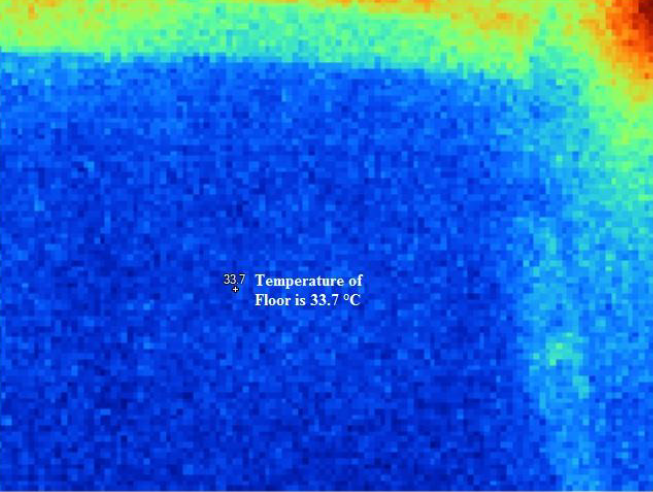
The temperature recorded at the floor is 33 deg. C.
Air Duct
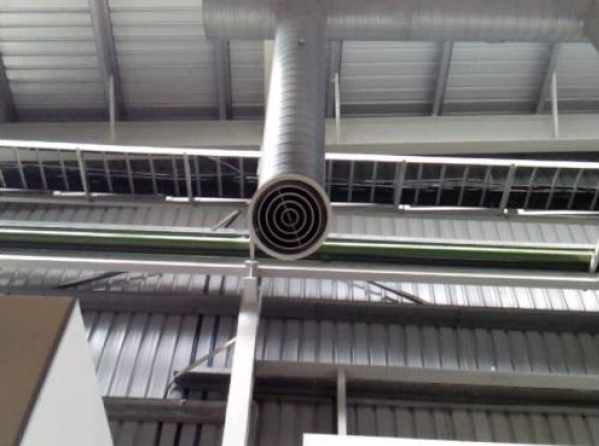
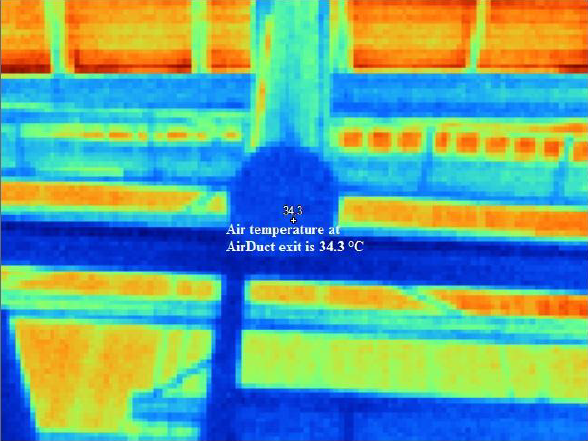
The temperature recorded at the exit of the air duct is 34.3 deg. C.
After installation of Skyshade Double Glaze Norikool Daylight
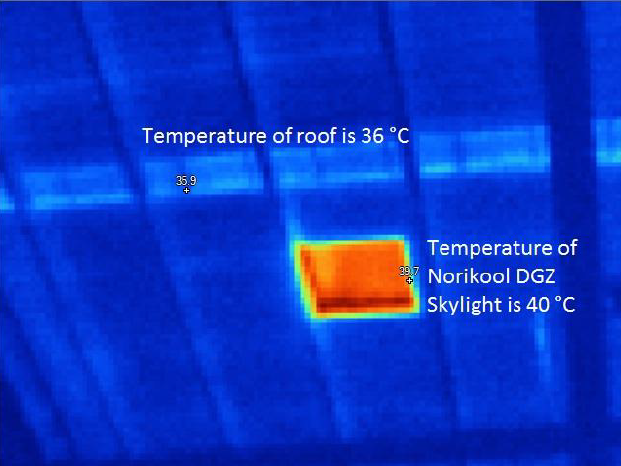
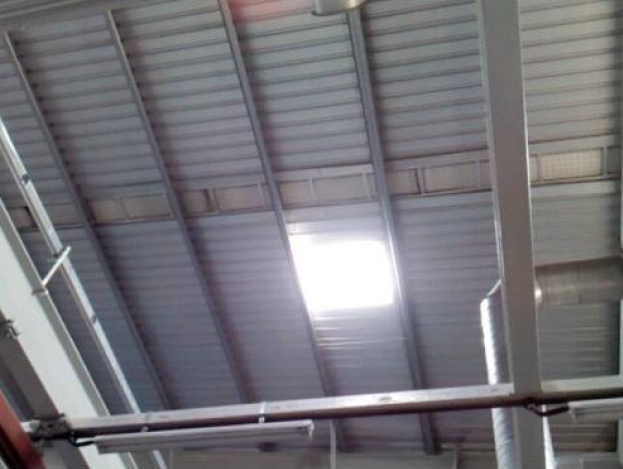 The temperature recorded at the skyshade double glaze norikool daylight is 36 deg. C as against the 44 deg. C. recorded at the strip light. The lux level across floor at task level is recorded to be ranging between 320 – 400 with 25% variation. This range of lux level is very much in the range prescribed by the design code.
The temperature recorded at the skyshade double glaze norikool daylight is 36 deg. C as against the 44 deg. C. recorded at the strip light. The lux level across floor at task level is recorded to be ranging between 320 – 400 with 25% variation. This range of lux level is very much in the range prescribed by the design code.
Inferences
- The total number of skyshade norikool double glaze daylights installed were 8 numbers for an area of 974 sq.m. The roof area occupied by skyshade double glaze norikool daylight is just 9.6 sq.m i.e a mere 0.86% of the floor area. This is very less compared to the strip lights which occupied around 5% of the floor area.
- The lux level obtained through the strip lights is around 900 – 1500 which is very high as per the standard design code. The lux level obtained through the skyshade norikool double glaze daylight is 350 on an average.
- The skyshade norikool double glaze daylight gives uniform light using less roof area and transmitting much less heat into the building which is insulated. It has to be kept in mind that in the insulated buildings, the heat that comes in cannot go out.
- The vertical south facing poly carbonate sheets add more heat in to the building without any value addition in terms of the lighting. These can be closed to cut the incoming heat.
- The roof construction method where rock wool is sandwiched between two layers of metal sheet allows heat inside the building at the joints.
CASE STUDY2
Location: Manufacturing Facility, Hyderabad
Roof Condition: Non insulated Roof
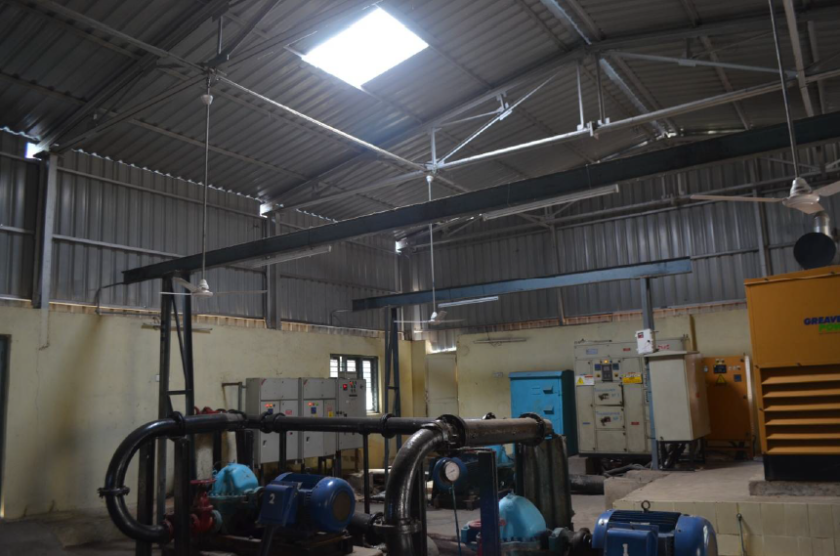
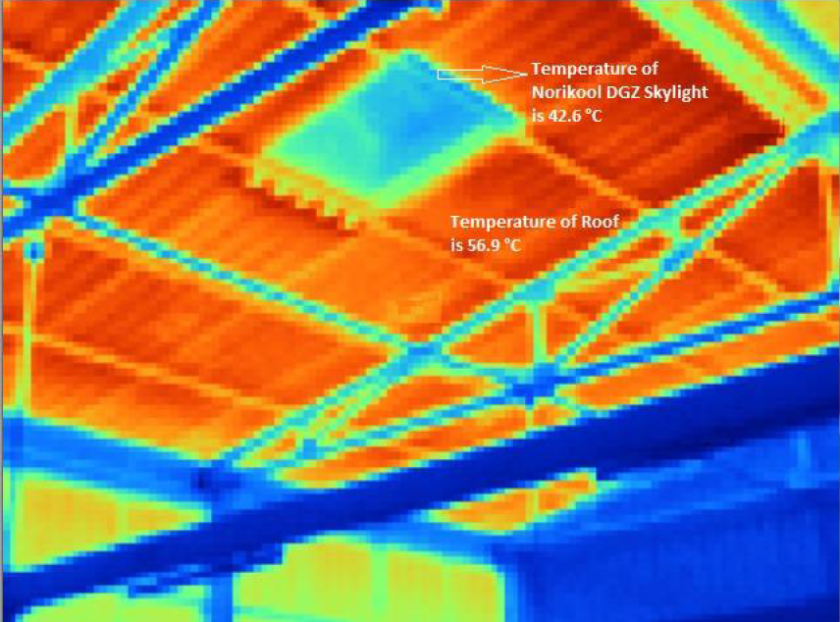
The blue colored areas indicate lower temperature, while the red colored area indicate higher temperature. The temperature at blue colored area is 42.6 deg.C., while the temperature at the red colored area is 56.9 deg. C.
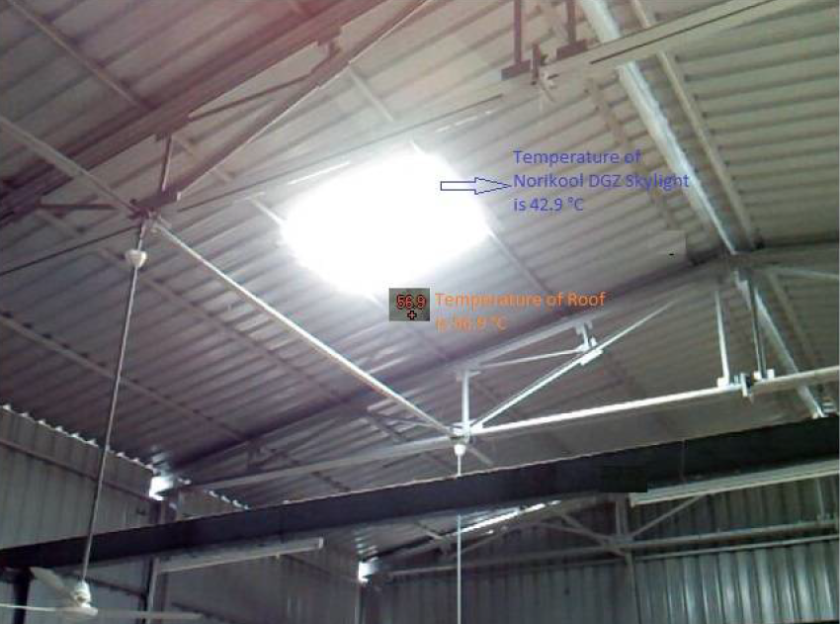
Inferences
- At an ambient temperature of 38 deg. C, the non insulated roof area heats upto 56 deg. C, the temperature at skyshade norikool double glaze daylight is 42 deg. C.
- While the skyshade double glaze norikool daylight occupies only 1% of the roof area, the temperature difference is 14 deg. C.
- It can be concluded that the heat transfer happens only through the roof.

